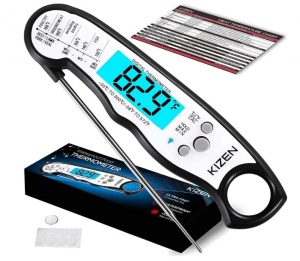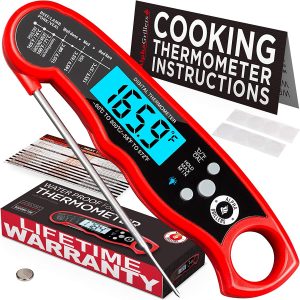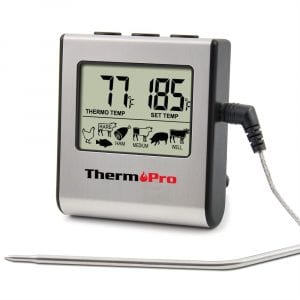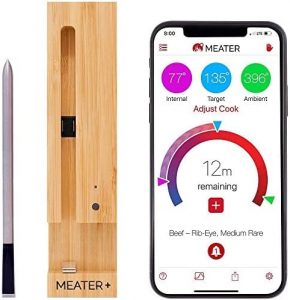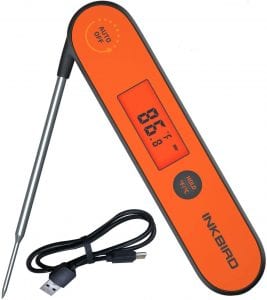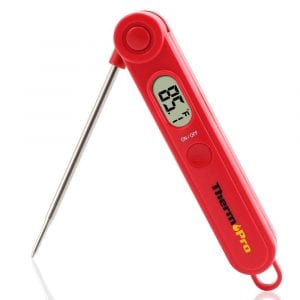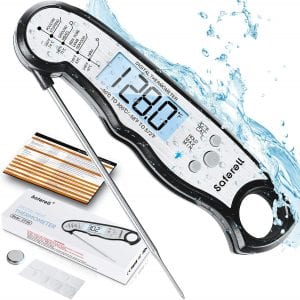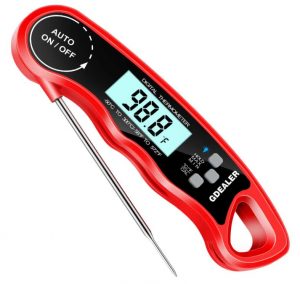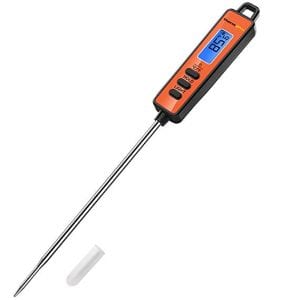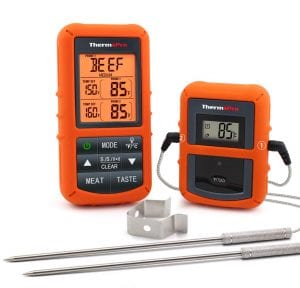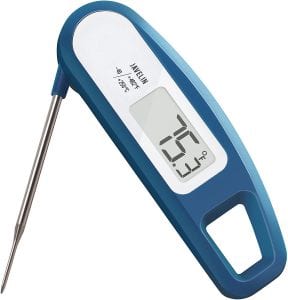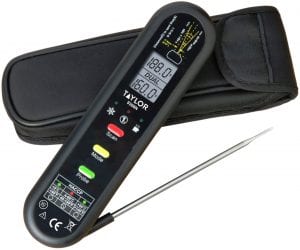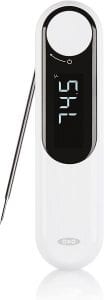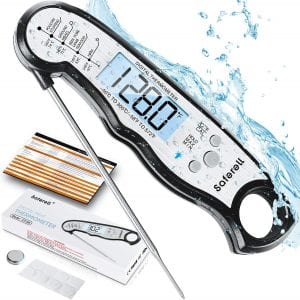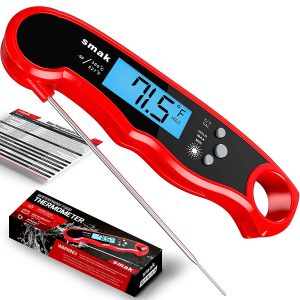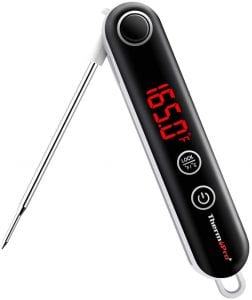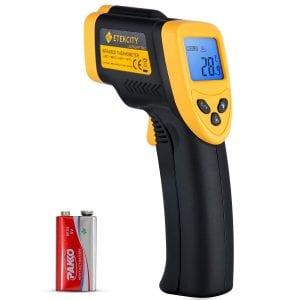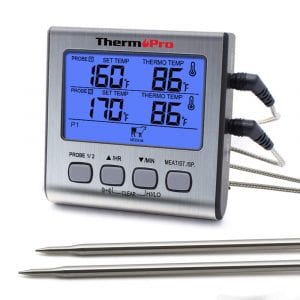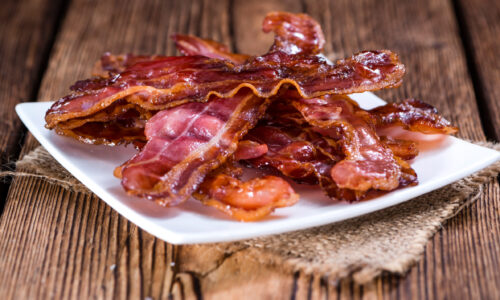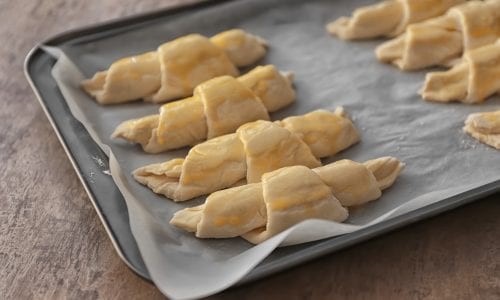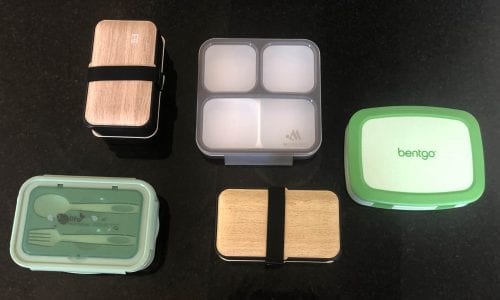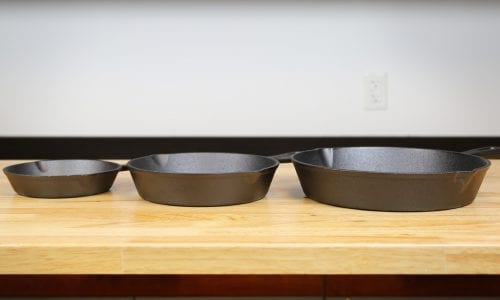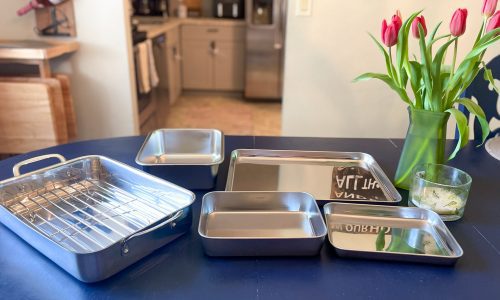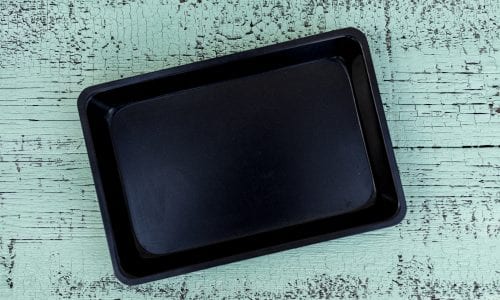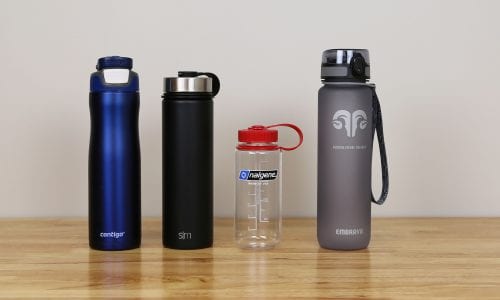The Best Food Thermometers
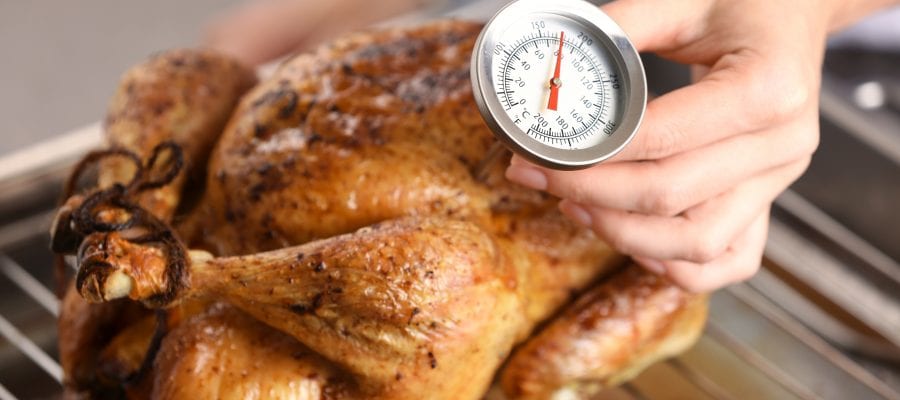
Our Review Process
Don't Waste Your Money is focused on helping you make the best purchasing decision. Our team of experts spends hundreds of hours analyzing, testing, and researching products so you don't have to. Learn more.
Our Picks For The Top Food Thermometers
- 1. Kizen Dishwasher Safe LED Screen Food Thermometer
- 2. Alpha Grillers Battery Powered Digital Meat Thermometer
- 3. ThermoPro TP-16 Battery Powered Programmable Food Thermometer
- 4. MEATER Outdoor Cooking Digital Meat Thermometer
- 5. Inkbird Ultra Fast Easy Clean Food Thermometer
- 6. ThermoPro TP03 Ultra-Clear Screen Smart Food Thermometer
- 7. Saferell Large Screen Waterproof Food Thermometer
- 8. GDEALER DT09 Large Rotating Food Thermometer
- 9. ThermoPro TP01A Long Battery Handing Food Thermometer
- 10. ThermoPro TP20 Hands-Free Backlit Food Thermometer
- 11. Lavatools PT12 NSF-Certified Digital Meat Thermometer
- 12. Taylor Precision Products Food Sage Digital Meat Thermometer
- 13. OXO Good Grips Fast Read Digital Meat Thermometer
- 14. ImSaferell Backlit Quick Read Digital Meat Thermometer
- 15. SMAK Battery Powered Waterproof Digital Meat Thermometer
- 16. ThermoPro TP18 Ultra Fast Thermocouple Instant Read Digital Food Thermometer
- 17. Etekcity Lasergrip 774 Auto Off Food Thermometer
- 18. ThermoPro TP-17 High/Low Temperature Alarm Food Thermometer
Storing this food thermometer is a breeze. You'll have the option of using the bottom hang hole, the inner magnet or a nearby drawer to keep the thermometer safe in between uses. Users will also appreciate the bright and large LCD screen.
Large LCD ScreenYou'll find this food thermometer is durable and resistant to damage, thanks to its strong outer ABS plastic body.
You won't have any trouble cooking your poultry and beef to perfection when you have this meat thermometer on hand. Not only is there a large digital screen with a backlight, but there's also a temperature guide printed right on the thermometer's handle. Added benefits include an adjustable probe and the ability to read the temperature in Celsius o...
Economical PickWhen it comes to affordability, this meat thermometer is quite attractive.
If you want to save money without sacrificing quality, the ThermoPro TP-16 LCD Digital Thermometer is a great option. You'll get preset recommendations and the option of a countdown or reverse countdown. The step-down tip design also means you'll get a reading soon after inserting the probe into your food.
Best for Budget-Conscious ShoppersThose who want the latest features without spending too much will love this thermometer.
Monitoring your main course has never been easier than with this wireless meat thermometer. Simply download the app on your smartphone and let the thermometer transmit the dish's temperature wirelessly to the app. The probe can monitor internal temperatures of up to 212 degrees Fahrenheit, which is more than enough to cook your favorite meals.
High-Tech OptionUse this digital meat thermometer for both indoor and outdoor cooking.
Buying Guide
If you routinely cook meats, a food thermometer is a must-have kitchen item. You can test the doneness of everything from steaks to whole turkeys without having to cut into them. But if you haven’t shopped for a food thermometer lately, you may not realize how much they’ve evolved from their earliest days.
Before you start shopping, consider whether you want a probe-based thermometer or one of the newer types that works using infrared laser technology. With the latter, you’ll simply point and click to determine doneness. If you opt for a probe type, consider the kinds of food you’ll be cooking. For cooking large meats in your oven or smoker, you’ll need a probe long enough to reach all the way into the center of something, like a chicken or pork roast.
“If you’re a novice cook, an instant-read thermometer is the way to go,” says Colleen Janke. She’s our resident culinary expert and the owner of Savory Kitchen, a cooking school in San Jose, California. “With other thermometers, you’ll remove the probe too quickly to get an accurate reading. An instant-read will prevent that from happening.”
Newer thermometers also come with food presets, which means no more looking up what temperature your meat needs to be to reach a safe level of doneness. For grilling and smoking, you may also want to consider a type of thermometer that attaches to your grill and communicates with a receiver that you can take around the house with you.
Accuracy is probably one of the most important factors in a meat thermometer. If you’re using a laser-based thermometer, you’ll probably need to be fairly close to the food to get the most accurate reading. Some probe-based thermometers now come with two probes that you can use as verification for the temperature you’re seeing.
If you’re using a food probe, you’ll need to wash it after each use to avoid contamination the next time you use it to test. This can be tricky, though.
“Don’t put your thermometer through the dishwasher!” says Janke. “For cleaning, always use hot, soapy water and let it air-dry.”
Thermometers with extra features like digital readers or receivers need additional care. Check the manufacturer’s instructions to determine exactly what you’ll need to do to clean your thermometer between uses.
Our Expert Consultant

Owner of Savory Kitchen, a cooking school and culinary events space
Colleen Janke is the owner of Savory Kitchen, a cooking school and culinary events space located in San Jose, California. Savory Kitchen offers cooking classes from kitchen basics like knife skills and baking to advanced classes that focus on regional specialty dishes. A trained sommelier, Colleen also loves finding local wines to incorporate into her cooking classes and instructing students on making divine food and wine pairings.
Outside of her business, Colleen loves spending almost all of her free time in her home kitchen, cooking and baking with her three children and her husband.
What to Look For
- Historically, food thermometers have operated by inserting a probe into the item being cooked. You can then check the temperature based on what the probe finds. However, a newer type of thermometer has emerged that uses infrared laser technology to test the meat merely by aiming it at the item being cooked. These point-and-shoot models eliminate messy probes.
- Among digital thermometers, some models stand out for their receiver setup. The receiver communicates with a device you clamp onto your grill or smoker. You then stick the two probes into the meat and step away. They can have a reach of several hundred feet, so you can keep an eye on your food from a safe distance.
- Preset recommendations can be a big help. Some thermometers come with preset programs for five USDA-approved doneness levels for nine different types of meat. Others come with recommended cooking levels for beef, veal, pork, poultry and fish.
- Timers are an essential part of a food thermometer. Look for a thermometer with both a countdown and reverse-countdown feature, allowing you to either monitor how long your food has been cooking or insert a specific time. The reverse-countdown feature is especially ideal for those with smokers who need to slow-cook a large piece of meat.
- When using a probe-based thermometer, pay close attention to the length of the probe if you routinely cook big items like ham, turkey or pork shoulders. Any probe that’s more than 4.5 inches is considered very long.
- When it comes to accuracy, laser infrared thermometers boast the closest accuracy ranges. However, as you move further away, the laser can lose that accuracy.
- Food thermometers are typically battery-powered, so make sure you have the right batteries in stock if they aren’t included. Some models shut off automatically when not in use to save battery power. They may also come with a low-battery indicator to ensure you aren’t stranded without extra batteries when you’re ready to start cooking.
- If you’ve ever waited for a food thermometer to give you a reading, you know it can be frustrating. Some laser thermometers can give you results within 500 milliseconds of pulling the trigger. Thermometers that use something called a step-down tip give almost instant readings.
- Thermometers that stay attached to your grill need to have a higher heat tolerance than those you only use when it’s time to test doneness. Make sure the wires and probe on any digital thermometer can withstand your grill’s heat when it’s clamped on during the cooking process.
More to Explore
If you don’t have a meat thermometer on hand — or the batteries on yours run out — you could always go by how a steak feels when you touch it. Professional chefs learn the exact level of sponginess based on the cut of meat. One easy way to do this yourself is to use the face test, which involves comparing the resistance you get when you press on the meat to how different areas of your face feel. The resistance of a medium-well steak compares to pressing on your forehead, while medium feels more like your chin. A medium-rare steak will compare to pressing on your cheeks — soft and with little resistance.

